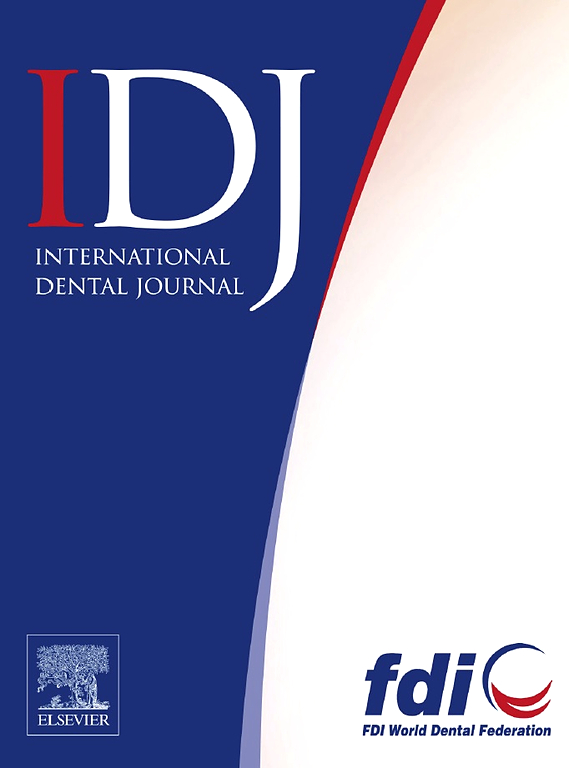Secular Trends in the Incidence, Prevalence, and Disability-Adjusted Life Years of Caries in Permanent Teeth in Six Asian Countries: 1990 to 2021
IF 3.2
3区 医学
Q1 DENTISTRY, ORAL SURGERY & MEDICINE
引用次数: 0
Abstract
Introduction and aims
Untreated dental caries in permanent teeth is a significant public health problem, particularly in Asia. This study compared the long-term trends in the incidence, prevalence, and disability-adjusted life year (DALY) rates of untreated dental caries in permanent teeth between China, India, Japan, South Korea, Thailand, and Singapore from 1990 to 2021. This selection provides a comprehensive representation of economic, healthcare, and demographic diversity in Asia, making our findings widely applicable.
Methods
Data were obtained from the Global Burden of Disease Study 2021. Changes in both the annual percentage and average annual percentage were calculated using joinpoint regression analysis. Independent age, period, and cohort effects were estimated by age–period–cohort analysis.
Results
From 1990 to 2021, the overall age-standardized incidence rate showed an increasing trend in China, India, and Thailand and a decreasing trend in Japan, Korea, and Singapore. The standardized prevalence and DALY rates decreased among countries, with Korea having the highest prevalence rate and India and Thailand having the highest prevalence and DALY rates. On age–period–cohort analysis, (1) the 20 to 24-year age group carried the highest caries risk, which declined with increasing age (age effect); (2) an overall decreasing or flat trend was observed (period effect); and (3) Japan, Singapore, and South Korea showed increasing incidence, prevalence, and DALY rates, whereas China, India, and Thailand exhibited decreasing prevalence and DALY rates (cohort effect).
Conclusion
This study revealed notable regional variations in the burden of untreated dental caries in permanent teeth across Asia from 1990 to 2021. These findings provide valuable insights for policymakers and healthcare professionals to develop targeted and evidence-based oral health strategies in the region.
Clinical Relevance
These findings underscore the need to develop targeted oral health solutions in Asia.
六个亚洲国家恒牙龋发病率、患病率和伤残调整寿命年的长期趋势:1990年至2021年
未经治疗的恒牙龋齿是一个重大的公共卫生问题,特别是在亚洲。本研究比较了1990年至2021年中国、印度、日本、韩国、泰国和新加坡之间未经治疗的恒牙龋齿的发病率、患病率和伤残调整生命年(DALY)率的长期趋势。这一选择提供了亚洲经济、医疗保健和人口多样性的全面代表,使我们的研究结果具有广泛的适用性。数据来自2021年全球疾病负担研究。采用结合点回归分析计算年百分比和年平均百分比的变化。通过年龄-时期-队列分析估计独立的年龄、时期和队列效应。结果1990 - 2021年,中国、印度和泰国的总年龄标准化发病率呈上升趋势,日本、韩国和新加坡呈下降趋势。标准化患病率和DALY率在各国之间下降,韩国的患病率最高,印度和泰国的患病率和DALY率最高。年龄-时期-队列分析结果表明:(1)20 ~ 24岁人群患龋风险最高,随年龄增长风险降低(年龄效应);(2)总体呈下降或平缓趋势(时期效应);(3)日本、新加坡和韩国的发病率、患病率和DALY率呈上升趋势,而中国、印度和泰国的患病率和DALY率呈下降趋势(队列效应)。本研究揭示了1990年至2021年亚洲地区未经治疗的恒牙龋齿负担存在显著的区域差异。这些发现为决策者和卫生保健专业人员在该地区制定有针对性和基于证据的口腔卫生战略提供了宝贵的见解。这些发现强调了在亚洲开发有针对性的口腔健康解决方案的必要性。
本文章由计算机程序翻译,如有差异,请以英文原文为准。
求助全文
约1分钟内获得全文
求助全文
来源期刊

International dental journal
医学-牙科与口腔外科
CiteScore
4.80
自引率
6.10%
发文量
159
审稿时长
63 days
期刊介绍:
The International Dental Journal features peer-reviewed, scientific articles relevant to international oral health issues, as well as practical, informative articles aimed at clinicians.
 求助内容:
求助内容: 应助结果提醒方式:
应助结果提醒方式:


